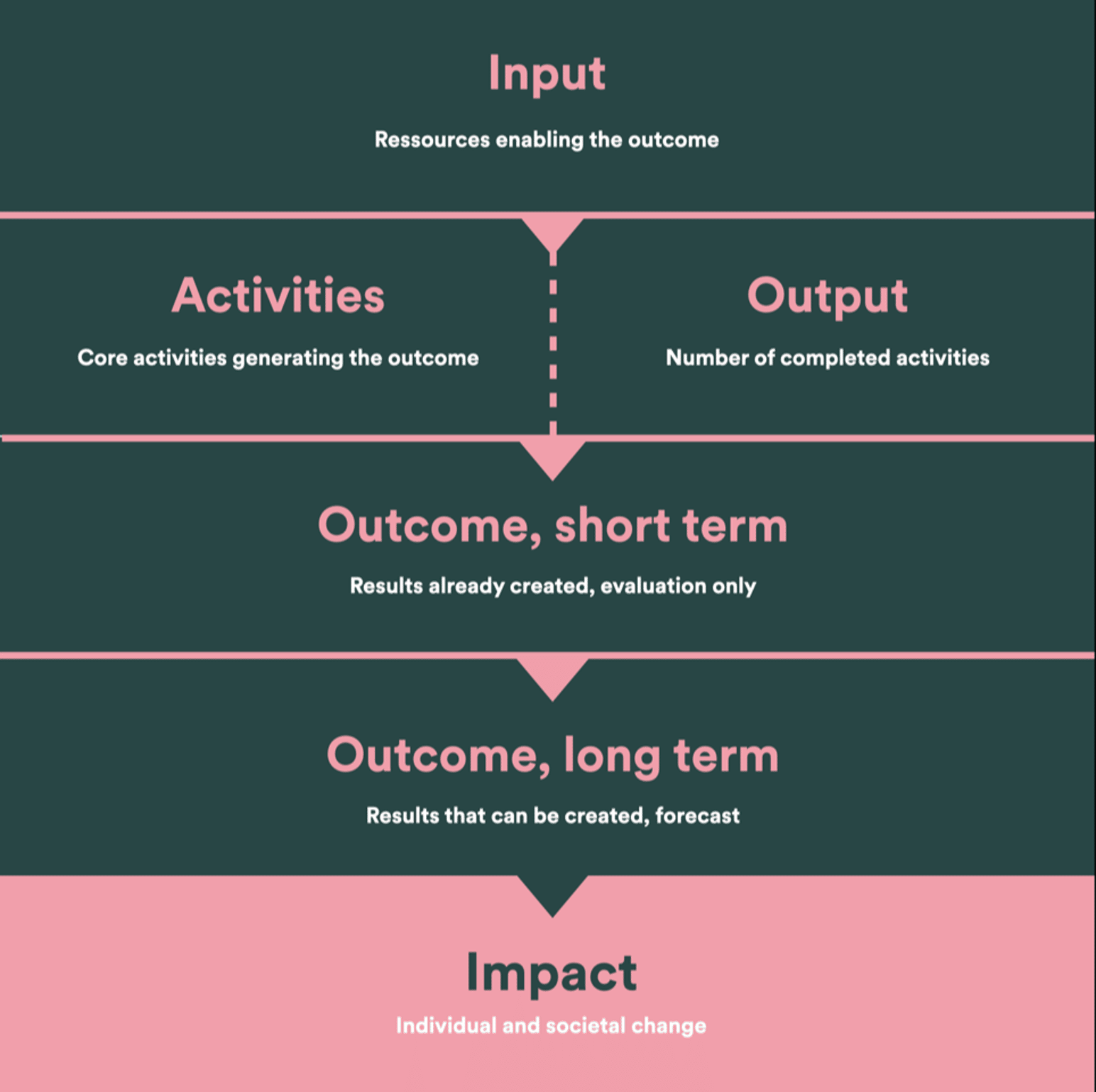What is SROI?
How to measure SROI.


The 7 principles of effective SROI assessment.
01: Involve stakeholders
Involve beneficiaries and other stakeholders when planning what to measure and how.
02: Understand what changes
Develop a theory of change and gather evidence of positive and negative change.
03: Value the things that matter
Rate the importance of different outcomes by valuing economic, social, and environmental benefits and costs (not captured in existing financial accounting value).
04: Only include what is material
Report on everything relevant and significant – but no more.
05: Do not over-claim
Compare your results with what would have happened anyway.
06: Be transparent
Explain all your evidence and assumptions clearly.
07: Verify the result
Have others to check and validate your results.
Theory of Change.

Your research design matters.
Randomised controlled trial.
Quasi-experiments.
Longitudinal study.
Cross-sectional study.
“
To make a causal assessment of the impact we aim to make, we’re including control groups when it is practically possible. This provides information on the counterfactual outcome and can be used to isolate the effect. It requires that the control group is representative of the target group, so they are comparable
— Michael Svarer, Board Member, Lind Foundation
Apply the SROI method.
01: Analysis purpose and stakeholder identification
- Determine the purpose
- Identify stakeholders
- Decide stakeholder involvement
02: Statement of results
- Construction of effect-diagram
- Identify inputs
- Evaluate monetary value of inputs
- Specify outputs
- Account for results
03: Adding monetary value
- Develop result indicators
- Collect data involving the results
- Determine duration of results
- Add monetary value to the results
04: Statement of measured effect
- Deadweight
- Displacement
- Attribution
- Drop-off
- Calculation of effect
05: Calculation of SROI
- Calculation of future effect
- Calculation of present value
- Calculation of SROI ratio
- Sensitivity analysis
- Payback period
06: Report, use and implementation
- Report and share results
- Implementation and evaluation of learnings
Start exploring data points.
The foundation of your SROI analysis is a combination of qualitative and quantitative data points, requiring you to follow your target group and the surroundings closely. The strongest data framework is based on collaboration and close dialogue as well as a combination of registry data and thoroughly designed surveys and interviews, identifying the change for the targets group.
You can use data sources such as:
- Financial reports
- Volunteer and employee working hours
- Participants registration
- Number of activities
- Surveys answered by participants and volunteers
- Interviews with focus groups and relevant stakeholders
“
For us, registering data is a growth engine for change. It is a joint effort, learning journey and value creation. By reflecting on data, we learn and become able to generate more value together with the people we work with. Insights and learnings from the data and impact measurements develop everyone in our programmes
— Nina Schriver, International Program Director, WAWCAS
SROI accuracy and challenges.
Uncertainty, variance in representativity, and biases are a natural part of assessing the SROI. In spite of their regularity, it is important to handle these factors as they may have implications on your results and social impact. Strive to be conservative in your approach, consider the counterfactual outcome — and take the share of value that would be created in the absence of your efforts into account. Then the likelihood of overestimating the outcome is minimised.
Potential SROI challenges:
- Complexity: SROI can be complex, time-consuming, and require a significant amount of data.
- Subjectivity: SROI can be subjective, especially social values as they rely on estimates and assumptions about the monetary value of different outcomes.
- Lack of data: SROI calculations rely on data that may not be available or may not be reliable.
Relevant SROI terms:
- Deadweight: The share of the effect that would have taken place without the project.
- Displacement: How much of the effect that has replaced other effects.
- Attribution: How much of the effect that is due to efforts from other projects or people.
- Drop-off: How much of the effect that devaluates over time.
We use these sources to valuate social efforts.
VIVE.
The Danish National Centre for Research and Analysis (VIVE) published a report in 2018 that
shows the public costs associated with eight different groups of socially marginalised people. The average cost per person in their use of the social security system is part of the framework.
Cabi.
Cabi, an independent organisation licensed by the Danish Ministry of Employment, has developed a social calculator. This estimates the societal value of an individual that gets employed based on two parameters: Increased tax income and a public spending cut due to the employment.
Sygdomsbyrden.
Sygdomsbyrden is a research initiative conducted by the Danish Health Authority and SDU, estimating the impact public health has on the public economy. Various conditions such as loneliness are examined and evaluated economically in detail in their latest report.
HACT.
HACT is an English organisation that is able to value persons increase in well-being and appoint a monetary value to e.g. being a member of a group, good health, and confidence. The values are based on 90 social outcomes and can be used to evaluate activities that have an unknown market price.
